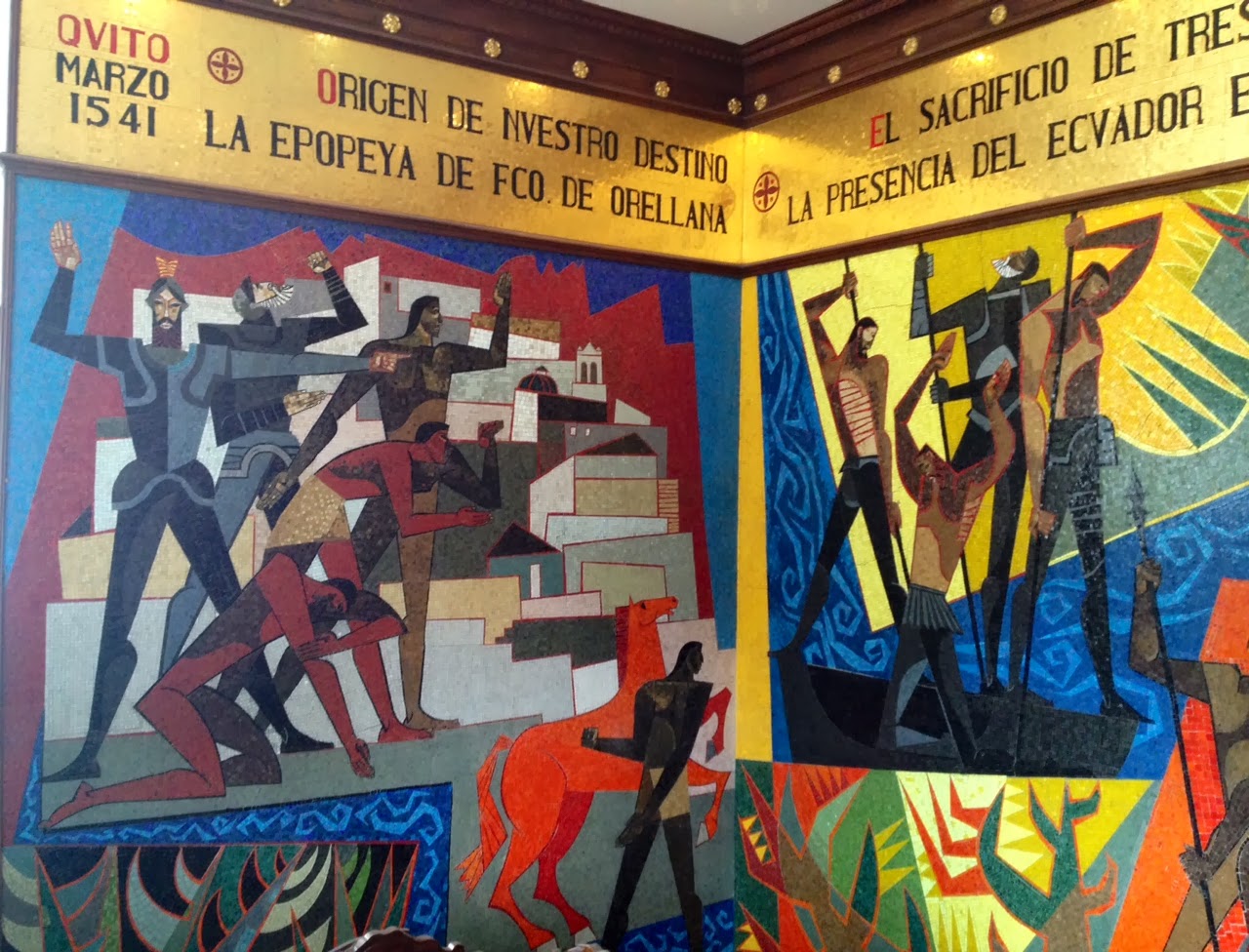While Cusco's tolerance has shown advancement, the multi-colored Cusqueno flag colors represent the different sectors of Inka ancestors.
Cusco's elevation averages over 11,000 ft, It is a city of approximately 450,000 residents (depending on the guide of the day) and 80% of its economy is based on the tourist dollar. Since most of the tourists use Cusco as a gateway to visit Machupicchu, there are approximately 250 guide services crammed into every narrow alley, up cobbled hillsides and surrounding the many plazas. How do they all survive?
La Compania de Jesus - one of two grand churches in Plaza de Armas
Cusco -and the world-renowned Machupicchu- are the #1 tourist draws in South America. It has been reported to be 'ground zero' for Gringo-landia and we found the reports to be accurate. Many English-speaking young people from the US, Canada, NZ, Australia, and all over Europe. Having traveled in 4 countries in SA, (Colombia, Ecuador, Chile and Peru), we saw our first Starbucks in Plaza de Armas. We passed and got great Peruvian coffee at one of the many local coffee shops!Since the tourist dollar is the name of the game, it was difficult to relax in any part of Plaza de Armas without being asked: "Lady, see my pictures?" and a portfolio of water color scenes would unfold. Or, the "mother/daughter/ baby llama trio", dressed to the nines in colorful indigenous attire repeatedly asking: "Lady, take our picture?". Others pleaded: "Lady, want a massage?" Menu-slapping employees attracted patrons into the many restaurants that wound like snakes up the impossibly narrow streets - which were not closed to cars.
Note the well-preserved stone foundations in photo- (left)
Once a traveler - who may prefer less-touristy locals - accepts what Cusco has become in order to survive, the wonders, history, color, location, traditions, markets and more can truly be enjoyed. And there is plenty to enjoy!
 There are markets for tourists, and markets for locals. Bargaining for purchases - even alpaca sweaters selling for S/.40 (40 soles) about $16 USD - is expected and accepted at either venue. Food stalls offer a blender-full of fresh fruit smoothies (up to 4 glasses) selling for S/.5 (5 soles/ $2USD) The plethora of quality woven items is overwhelming and difficult to resist!
There are markets for tourists, and markets for locals. Bargaining for purchases - even alpaca sweaters selling for S/.40 (40 soles) about $16 USD - is expected and accepted at either venue. Food stalls offer a blender-full of fresh fruit smoothies (up to 4 glasses) selling for S/.5 (5 soles/ $2USD) The plethora of quality woven items is overwhelming and difficult to resist!Since Cusco served as the Inca capitol for an empire stretching from Colombia to northern Argentina & Chile, the history (yes, and marketing) of that ancient and incredible culture is everywhere. And it's fascinating.
Cusco, the "city of the PUMA" - is laid out it the animal's shape. The Puma is the sacred animal of the triology that represents the middle earth, present, the now. We visited the Puma head - Sacsayhuaman - and were immediately amazed at the stone structures, their size, smoothness and fit. The Puma's heart is in the exact location of the Plaza de Armas. The 4 roads leading into and out of the city are coordinated in the 4 cardinal directions. Flowing rivers form the upper and lower parts of the Puma's body. Amazing.
Tennis at Sacsayhuaman site above Cusco.
El Templo del Sol -
Escaping the markets in Pisac for a quiet day hike on a country lane.
We spent 5 days in Cusco, absorbing the culture, acclimatizing to the altitude, touring the city, its museums, churches, markets and restaurants. Stocked with coca products, we were psyched and ready to tackle our 7-day trek to Machupicchu via the Salkantay & Inka Trails. Next blogpost: Peruvian Sojourn Part II: Machupicchu the 'hard way" OR "The Ridiculously Strong Quechua PORTERS"











No comments:
Post a Comment